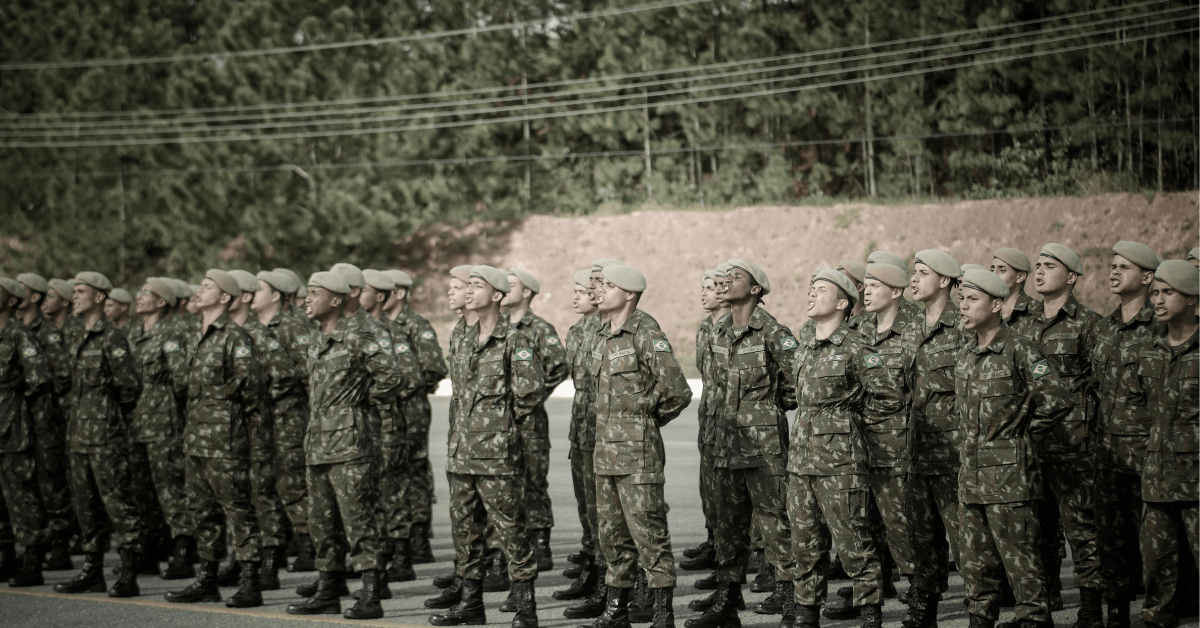A Letter to Service Member is a formal communication sent to a member of the armed forces, expressing support, gratitude, or other sentiments. Its purpose is to convey a message or provide encouragement to the service member, particularly during deployment or other challenging circumstances.
In this article, we will provide you with templates, examples, and samples of Letter to Service Member. These resources are designed to help you craft a heartfelt and meaningful letter to a service member. Whether you’re writing to a family member, friend, or stranger, our samples will guide you in expressing your thoughts and emotions effectively.
Our goal is to make it easy for you to write a Letter to Service Member that conveys your appreciation and support. With our templates and examples, you can create a personalized letter that will uplift the spirits of the service member and show your gratitude for their sacrifice and service.

Sample of a Letter to Service Member
[Your Name]
[Your Address]
[City, State, Zip Code]
[Email Address]
[Phone Number]
[Date]
[Service Member’s Name]
[Rank and Branch of Service]
[Unit Name or Number]
[Base or Deployment Location]
Dear [Service Member’s Name],
I am writing to express my heartfelt gratitude for your service and sacrifice. Your dedication and bravery inspire us all, and I want to thank you for your commitment to protecting our country and defending our freedoms.
I know that being away from home can be challenging, especially during deployments. Please know that your efforts are appreciated, and you are always in our thoughts and prayers. Your service is a true testament to your courage and selflessness.
I want to extend my sincerest thanks to you and your fellow service members for everything you do. Your sacrifice does not go unnoticed, and we are forever grateful for your service.
Sincerely,
[Your Name]
How to Write a Letter to Service Member
Writing a letter to a service member is a meaningful way to show your appreciation and support. Here’s a step-by-step guide on how to craft a heartfelt letter:
1. Understand the Purpose:
Before you start writing, understand why you’re writing the letter. Whether it’s to express gratitude, offer support, or provide encouragement, knowing your purpose will guide your message.
2. Choose Your Format:
Decide whether you want to write a physical letter, an email, or use a service that sends letters to deployed service members. Choose a format that feels most personal and meaningful to you.
3. Start with a Warm Greeting:
Begin your letter with a warm greeting, addressing the service member by name and rank if known. This sets a positive tone for the rest of the letter.
4. Express Your Gratitude
Express your gratitude for their service and sacrifice. Be specific about what you’re thanking them for, whether it’s their bravery, dedication, or the sacrifices they and their family have made.
5. Share a Personal Story or Connection:
If you have a personal connection to the service member or a story that relates to their service, share it. Personal touches can make your letter more meaningful.
6. Offer Support and Encouragement:
Offer words of support and encouragement. Let them know that their service is appreciated and that you’re thinking of them during their deployment.
7. Close with Warm Regards:
Close your letter with warm regards, letting the service member know that you’re sending positive thoughts their way. Sign your name and include any contact information if you wish to stay in touch.
By following these steps, you can write a heartfelt letter that will uplift the spirits of the service member and show your appreciation for their service.
Things to Keep in Mind
1. Personalize Your Message:
Take the time to learn about the service member you’re writing to, including their name, rank, and deployment location. Personalizing your letter shows that you care and adds a personal touch.
2. Express Genuine Gratitude:
Be sincere in expressing your gratitude for their service. Avoid clichés and generic statements. Instead, mention specific actions or sacrifices they’ve made that you admire.
3. Keep It Positive and Encouraging:
Your letter should uplift the service member’s spirits. Avoid discussing negative or controversial topics. Instead, focus on positive and encouraging messages that will boost their morale.
4. Share Positive News or Stories:
If you have any positive news or uplifting stories to share, include them in your letter. Positive stories can help brighten the service member’s day and provide a sense of connection to home.
5. Include Words of Support:
Let the service member know that you support them and are thinking of them during their deployment. Your words of support can provide comfort and encouragement during challenging times.
6. Offer Help or Assistance:
If you’re able to provide any help or assistance to the service member’s family while they’re deployed, offer it in your letter. Your offer of support can ease their worries and show that they’re not alone.
7. Close with Warm Regards:
End your letter with warm regards and a positive closing statement. Let the service member know that you’re sending positive thoughts their way and that you look forward to their safe return.
FAQs about a Letter to Service Member
When writing a letter to a service member, it’s natural to have questions about the best way to express your gratitude and support. Here are some frequently asked questions and their answers:
1. How do I address the letter to a service member?
Address the service member by their rank and last name, followed by their branch of service. For example, “Dear Sergeant Smith, US Army.”
2. What should I include in the letter?
Include a heartfelt message of appreciation for their service, words of encouragement, and any personal stories or connections you may have with the service member.
3. Can I send care packages or gifts along with the letter?
Yes, you can send care packages or gifts, but be mindful of the service member’s location and any restrictions on what can be sent.
4. How long should my letter be?
Your letter can be as long or as short as you’d like, but aim for a concise message that is heartfelt and meaningful.
5. How can I ensure my letter reaches the service member?
If you know the service member’s address, you can send the letter directly. Alternatively, there are organizations that can help facilitate the delivery of letters to service members.
RELATED:
Termination of Services Letter to Customer
Letter to Cancel Service Contract
